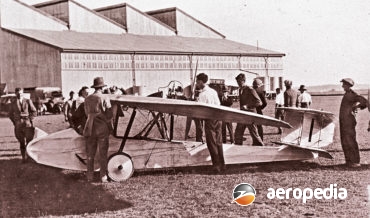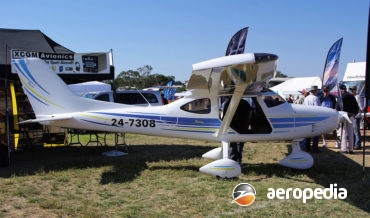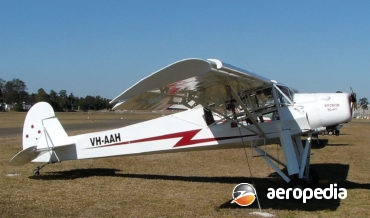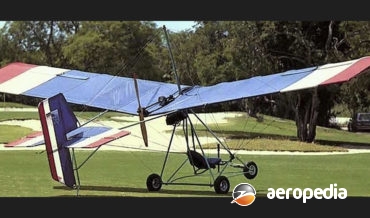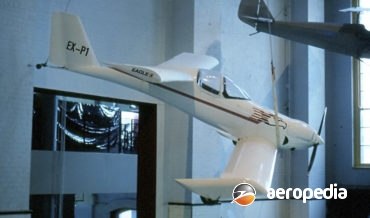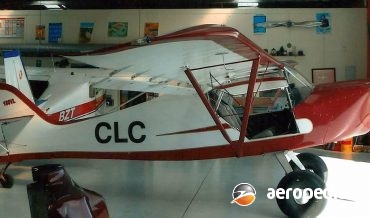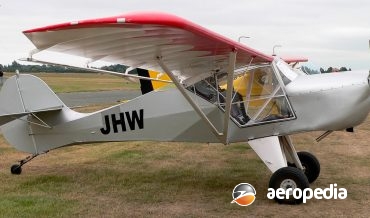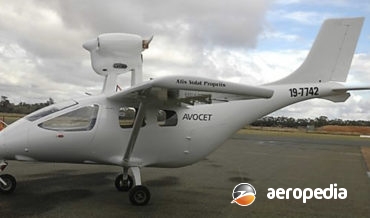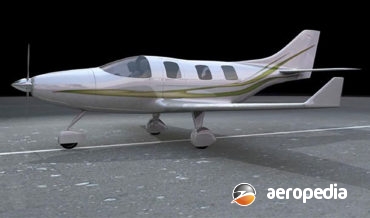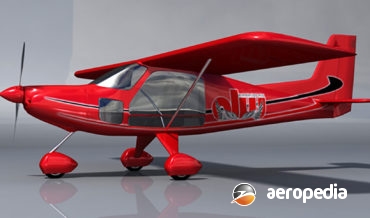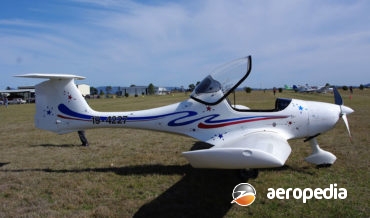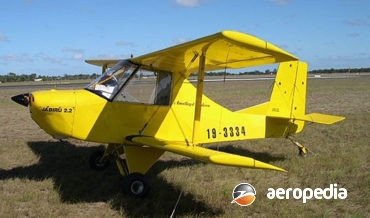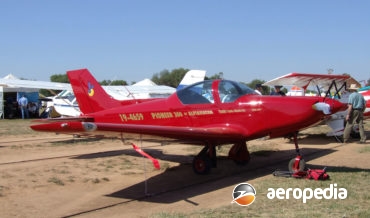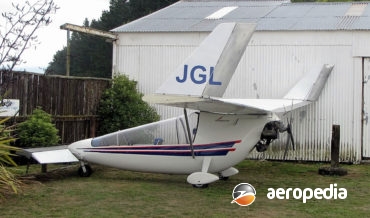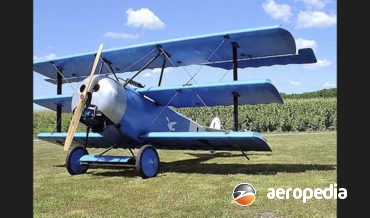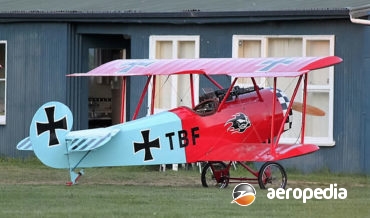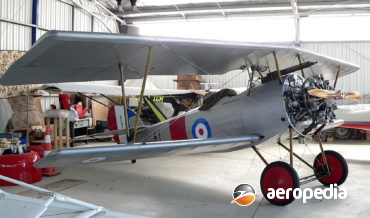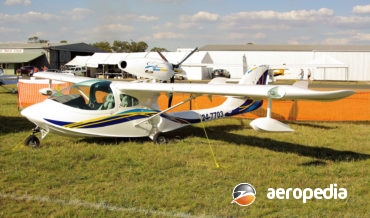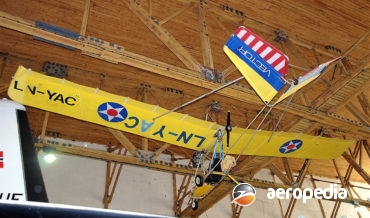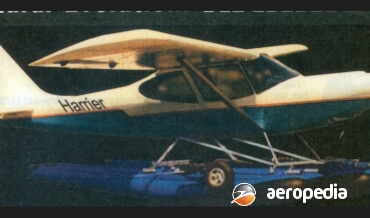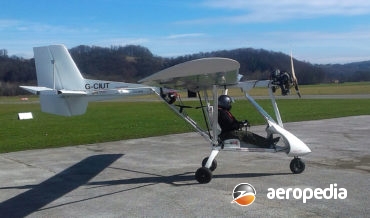All Contents
Contents
The Warbler was a parasol wing monoplane with internal bracing designed by Sqdn Ldr L J R Wackett, an officer in the RAAF at the time in charge of the Government Experimental Aeroplane Factory in Sydney.
David C. Eyre
- May 8, 2019
The TL-300 Sirius is one of a number of light aircraft produced in the Czech Republic to LSA standards, first being completed in early 2009, having at that time completed flight testing and certification.
David C. Eyre
- May 8, 2019
The CX-4 is a single-seat, all-metal light sporting aircraft designed by David Thatcher of Pensacola, Florida, aimed at the homebuilt market and normally to be fitted with a Volkswagen engine conversion.
David C. Eyre
- May 8, 2019
Designed and developed by Nestor Slepcev at Beechwood on the mid-north coast of New South Wales, the Storch is a three/quarter scale replica of the Luftwaffe Fieseler FI-156 Storch STOL communications aircraft.
David C. Eyre
- May 8, 2019
The Condor is a two-seat light sporting aircraft designed by Messrs Bud Head, Robert Carswell and David French of Seahawk Industries and was initially supplied in kit form by that Company, being basically a development of the Eipper Quicksilver series.
David C. Eyre
- May 8, 2019
The Cougar I was designed by Robert Nesmith in 1957 and is similar in configuration to the Wittman Tailwind, the designer being of the view the latter type could ‘stand a little improvement”.
David C. Eyre
- May 8, 2019
The Jenny is a two-thirds scale replica of the Curtiss JN-4D Jenny training aircraft which in its ultralight form can be used an ultralight trainer as well as a sporting aircraft.
David C. Eyre
- May 8, 2019
Designed and developed by Composite Industries Ltd in Western Australia, the Eagle EX-P1 is considered to be the first designed and built all-composite aircraft completed in Australia.
David C. Eyre
- May 8, 2019
In the 1980s Ultralight Aircraft Components Pty Ltd of Bondi Beach, NSW commenced marketing the Avro Mantis ultralight aircraft.
David C. Eyre
- May 8, 2019
The Magnum is one of a series of light kit-built aircraft produced by Avid Aircraft Inc of Idaho, and is one of the larger aircraft produced in the range by the company
David C. Eyre
- May 8, 2019
The Mark IV and Speedwing are produced by Avid Aircraft of Caldwell Idaho in kit form are examples of a range of aircraft produced in this form to meet the requirements of amateur builders around the world for light aircraft with a good performance that are cheap and easy to
David C. Eyre
- May 8, 2019
The Outback is a two-seat light sporting aircraft designed and built my Michael Sharples with the assistance of his son-in-law Alex and son Nicholas.
David C. Eyre
- May 8, 2019
Australian LightWing, formerly known as Hughes Aircraft, has since 1985 designed, developed and produced a series of light aircraft for the Australian market, having, by the end of 2009, delivered 175 aircraft with some 20 percent of these sold in kit form.
David C. Eyre
- May 8, 2019
The Tapis was designed by Australian LightWing of Ballina NSW as a new variant of the SP [Speed] series with high-wing configuration rather than low-wing and entered production in kit and fully complete form during 2012.
David C. Eyre
- May 8, 2019
The Chinook series of light aircraft was produced at Vernon, British Colombia, in Canada by Aircraft Sales & Parts, and more than 900 examples have been produced and sold around the world.
David C. Eyre
- May 8, 2019
The Albatross is one of the new breed of light efficient aircraft available on the market and it has been imported into Australia by Albatross Aviation in Queensland. It has a composite fuselage of fibreglass reinforced by wooden bulkheads and frames.
David C. Eyre
- May 8, 2019
Designed by Eric Whitney to CAO 95.10 in the mid 1990s, the Falcon is a single-seat light sporting aircraft powered by a Rotax 503 engine, but larger engines in the Rotax and Jabiru range may be installed.
David C. Eyre
- May 8, 2019
The Pioneer 300 is one of a series of light touring and training aircraft produced by Alpi Aviation in San Quirino, Italy, the 300 being a two-seater with an electrically operated retractable undercarriage.
David C. Eyre
- May 8, 2019
Looking similar to the Zenair CH-640, the AMD Alarus is a two-seat light general-aviation touring and training monoplane produced in the United States by the Aircraft Manufacturing & design Company at Eastman in Georgia, the aircraft, like the CH-640, being designed also by Christopher Heintz of Zenair.
David C. Eyre
- May 8, 2019
The Falcon was designed in the United States and produced by American Aircraft Inc of Albuquerque, New Mexico and produced in single and two-seat variants.
David C. Eyre
- May 8, 2019
The Dr.1 is a 75% scale replica of the famous World War I fighter and is supplied to the builder in kit form. It is of aluminium tubular construction and has removable three-piece wings which are transportable.
David C. Eyre
- May 8, 2019
During 1917 the principal German fighters of the time were losing their superiority and the German Air Command called for a fighter competition to develop a new fighter.
David C. Eyre
- May 8, 2019
The Nieuport 24 replica is one of a series of scale and full-scale World War I aircraft produced by Airdrome Aeroplanes of Holden, Missouri for the sport pilot and it is supplied in kit form for construction by the amateur pilot / builder in two variants, the Nieuport 24 and
David C. Eyre
- May 8, 2019
Designed by Miguel Rosario, the Seamax is a kit-built two-seat, side-by-side, all composite amphibious flying boat which utilised computer aided design and sophisticated mould making technology.
David C. Eyre
- May 8, 2019
The R40S is a low-wing all-metal construction kit aircraft produced in Romania for the light aircraft market. The prototype (YR-6138) was shown at the Paris Airshow in June 2001, this aircraft making its first flight on 3 May 2001.
David C. Eyre
- May 8, 2019
The Taipan was an ultralight single-seat high performance machine designed and built in the 1980s by Aerotec of Toowoomba, QLD, powered by a 37-kw (50-hp) Fuji 440 engine (440-cc) which was a conversion of a Snowmobile engine for aviation use.
David C. Eyre
- May 8, 2019
The Vector series of ultralight aircraft was designed in the United States by Messrs Berndt Petterson, Michael McCarron and Paul Yarnell and was designed to US FAR 103 Ultralight Vehicle regulations and was developed in a series of models by Aerodyne Systems and introduced to the market in kit form
David C. Eyre
- May 8, 2019
The Harrier was a three-seat light touring and sporting aircraft marketed by Aeromarine Marketing Ltd of Kuranda in northern Queensland. Produced in kit form in about 2001, the aircraft was of all-composite construction and replaced its predecessor in the manufacturer’s production facility, this having been an aircraft of wooden construction
David C. Eyre
- May 8, 2019
The Solo is one of a series of aircraft developed in Bulgaria by Aeroplanes Dar, the Company having been established in 1917 by the King of Bulgaria, King Ferdinand, as a workshop for what was to become the Country’s National Air Force.
David C. Eyre
- May 8, 2019
Recent Comments
Archives
Categories
- No categories
Categories
- No categories
Latest Posts
Newsletter

